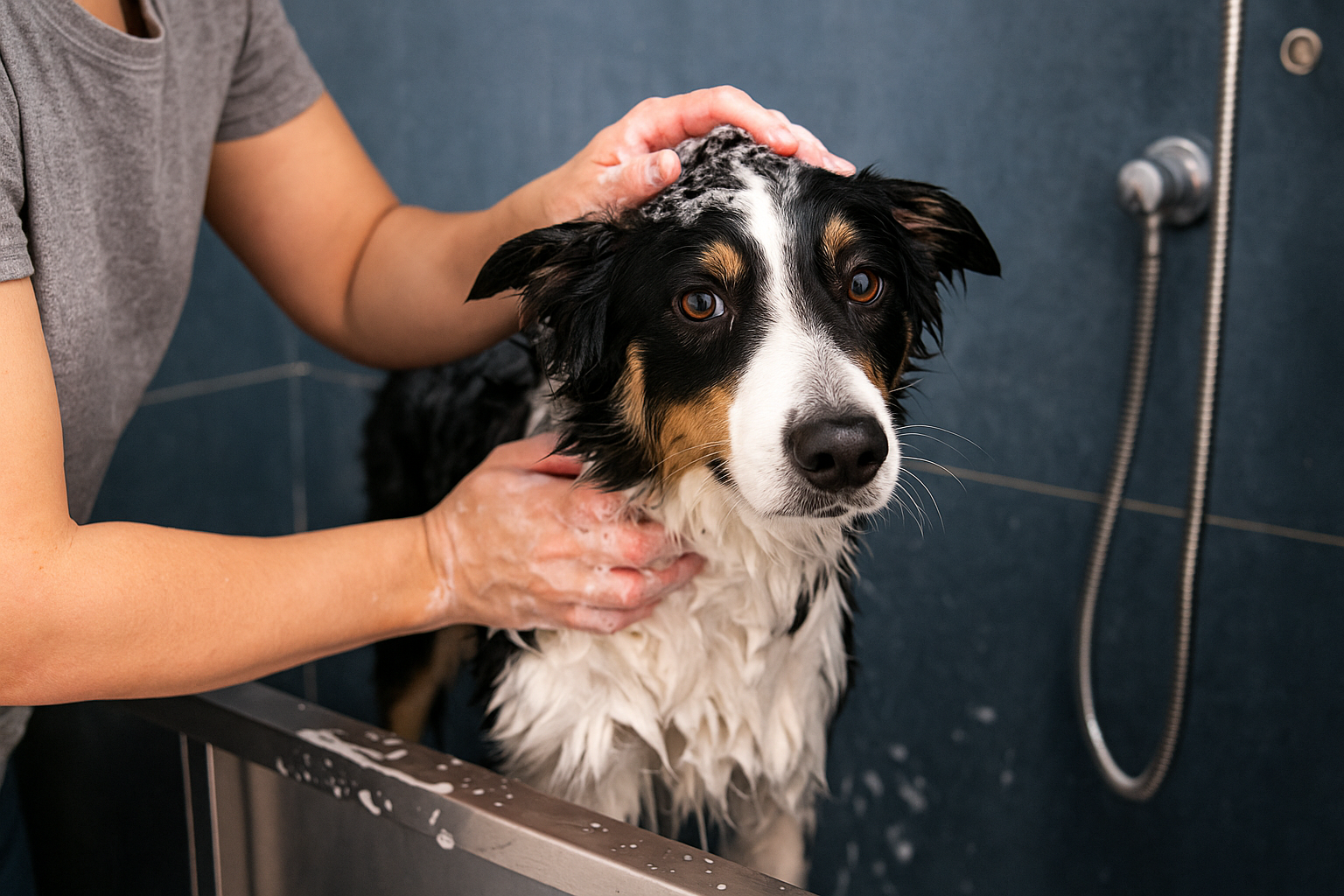
Bath time doesn’t have to be stressful—for you or your pup. With the right tools and a bit of know-how, dog grooming at home can be a breeze and even a bonding experience. Whether you’ve got a mud-loving Labrador or a fluffy Shih Tzu, learning a few dog grooming tips can go a long way toward keeping your dog’s coat clean, skin healthy, and overall wellness in check.
Here’s everything you need to know about how to bathe your dog like a pro.
🧼 Dog Grooming Tips for a Stress-Free Bath
Before you reach for the shampoo, preparation is key. Start by brushing your dog to remove any tangles or loose fur. This makes washing more effective and prevents matting.
Pro tip: Use a rubber grooming brush for short-haired dogs or a slicker brush for long coats.
Have these supplies ready:
- Dog-specific shampoo (human shampoo can irritate skin)
- Towels
- Detachable shower head or a pitcher
- Non-slip mat
- A favorite toy or treat for distraction
Optional but helpful: a grooming tub or elevated surface to save your back.
🚿 How Often Should You Bathe Your Dog?
How frequently your dog needs a bath depends on their breed, activity level, and skin condition. As a general rule:
- Short-haired dogs can go 1–3 months between baths
- Long-haired or double-coated dogs may need monthly baths
- Dogs with skin conditions may require medicated baths more frequently
Overbathing can dry out their skin and strip natural oils, so speak to your vet if you’re unsure about the best schedule.
🐶 Step-by-Step Bathing Routine
- Water Temperature: Lukewarm is ideal—never hot.
- Wet Thoroughly: Start from the neck down. Avoid the eyes and ears.
- Lather Up: Massage shampoo into the coat, working in sections.
- Rinse Completely: Shampoo residue can cause irritation.
- Dry Carefully: Use a towel first, then a blow dryer on low if your dog tolerates it.
If your dog is sensitive or nervous, try using a calming pet wipe around their face instead of water.
🧴 Choosing the Right Shampoo
Not all shampoos are created equal. Use one specifically formulated for dogs. If your dog has sensitive skin, opt for hypoallergenic or oatmeal-based options. Flea and tick shampoos are helpful during peak season, but they shouldn’t replace monthly prevention.
A few great choices:
✂️ When to Call in a Pro Groomer
Some grooming tasks—like de-shedding thick coats, trimming nails, or cleaning ears—may be better left to professionals. If your pup has a particularly thick double coat or is prone to matting, scheduling a professional grooming session every few months can keep things manageable.
Need help finding a local groomer or mobile grooming service in Southwest Florida? Contact Qualified Pet Services and we’re happy to point you in the right direction!
❤️ Why Regular Grooming Matters
Regular grooming isn’t just about keeping your dog looking good—it’s about their health. Bathing helps remove allergens, bacteria, dirt, and parasites. It’s also a great opportunity to check for lumps, bumps, or skin issues that may need a vet’s attention.
Plus, a clean dog is a cuddle-worthy dog. 🐾
✅ References:
- American Kennel Club. (2021, March 1). How often should you bathe your dog? AKC.org. https://www.akc.org/expert-advice/health/how-often-should-you-bathe-your-dog/
- ASPCA. (n.d.). Dog grooming tips. American Society for the Prevention of Cruelty to Animals. https://www.aspca.org/pet-care/dog-care/dog-grooming-tips
- Chewy. (2024). Best dog shampoos for every skin type. Chewy.com. https://www.chewy.com/b/skin-coat-care-345
- VCA Animal Hospitals. (n.d.). Grooming your dog. https://vcahospitals.com/know-your-pet/grooming-your-dog
⚠️ Disclaimer:
This blog is for informational purposes only and does not replace advice from your veterinarian or pet care professional.


